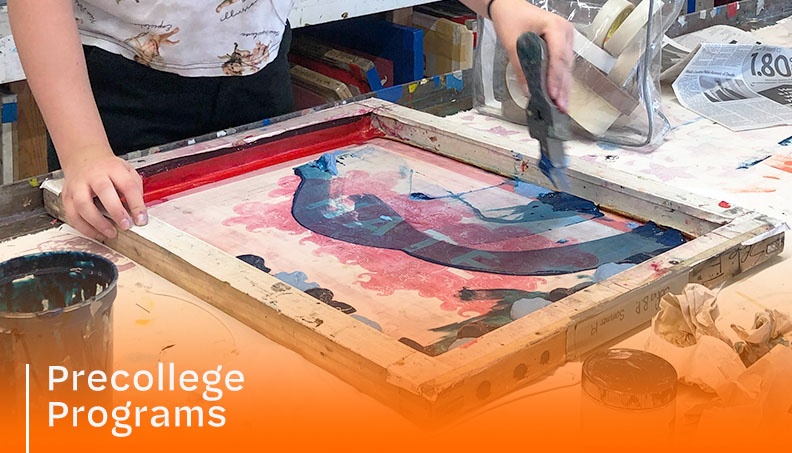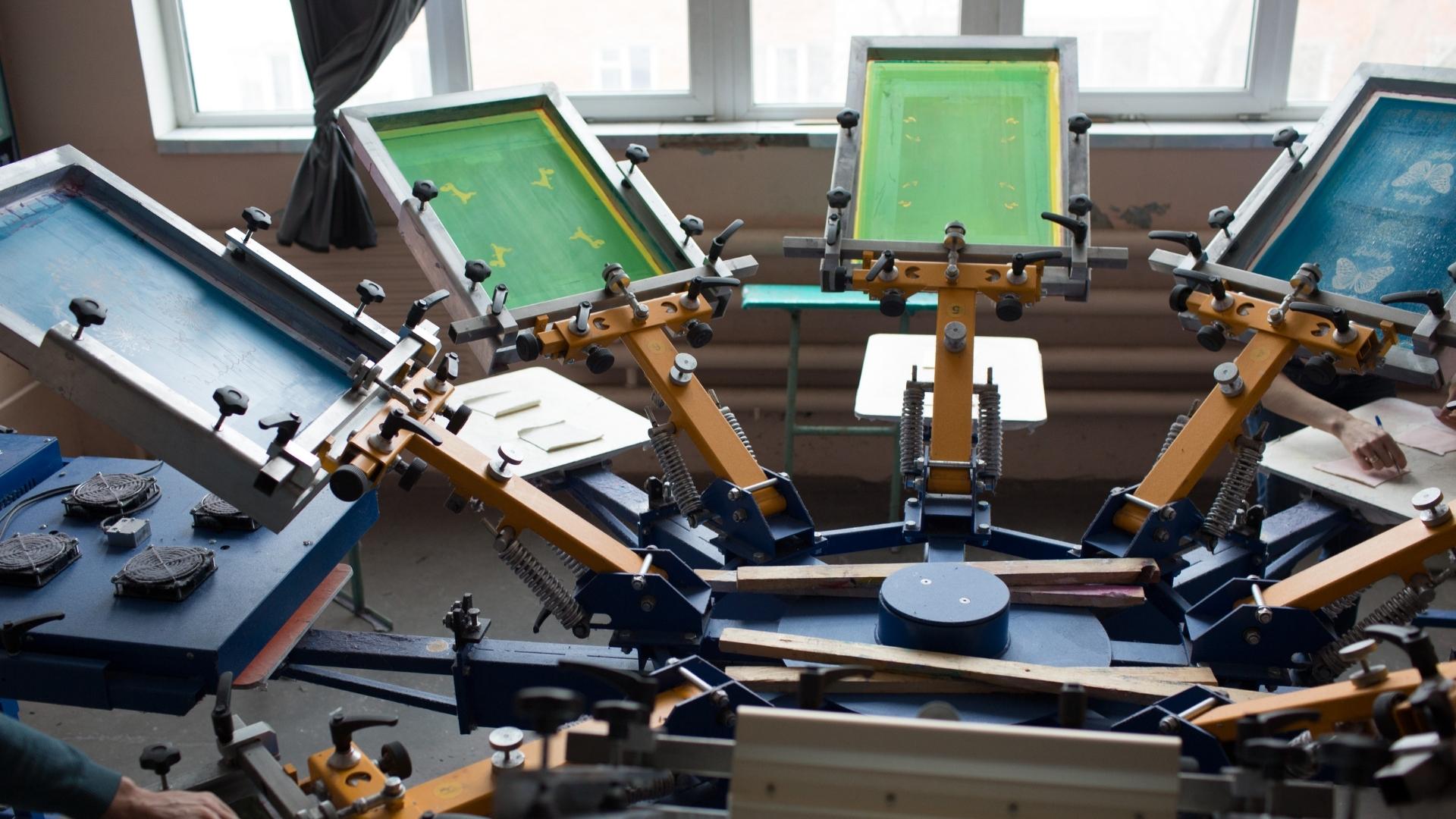Discover the Various Types of Screen Printing Techniques for Your Following Project
Screen printing offers a varied array of methods that can improve any kind of imaginative task. From typical approaches like serigraphy to contemporary technologies such as direct-to-garment printing, each approach has its unique advantages. Specialty options, consisting of metal and eco-friendly inks, introduce even more opportunities. Recognizing these techniques can greatly impact the last result. The difficulty exists in selecting the most ideal technique for specific requirements and wanted effects. What aspects should one think about?

The Essentials of Screen Printing
Although screen printing may seem complicated, it is basically a straightforward process that includes moving ink with a mesh screen onto different surface areas. The strategy starts with the creation of a stencil, which defines the style to be published. This pattern is connected to a mesh screen, generally made of polyester or nylon. As soon as the stencil is in area, ink is put on the screen and pushed via the mesh using a squeegee, causing the wanted pattern being printed on the underlying material.
Screen printing can be carried out on a large range of substrates, including plastic, material, and paper, making it a functional option for various tasks. The procedure enables dynamic colors and complex styles, making it preferred in sectors such as marketing, art, and fashion. Understanding these basics equips individuals with the fundamental understanding called for to discover advanced methods in screen printing.
Traditional Screen Printing Techniques
Traditional screen printing strategies have been used for centuries, protecting the workmanship and creativity of this method. This strategy utilizes a mesh screen to move ink onto a substrate, such as material or paper, enabling lively and durable styles. The procedure begins with producing a pattern, which blocks specific locations of the screen to control where the ink will certainly be used.
One prominent strategy is serigraphy, frequently used for restricted editions and artistic prints. Another is making use of water-based inks, which are environment-friendly and give a soft feel on textiles - 10:9 Design Embroidery. Additionally, typical approaches can consist of hands-on printing, where craftsmens use ink with a squeegee, ensuring precision and interest to information
These strategies stay valued in the industry for their tactile high quality and the distinct textures they generate, interesting both makers and customers who appreciate the heritage of screen printing.
Digital Screen Printing Innovations
As the demand for faster production and personalization in the printing market has surged, digital screen printing advancements have actually become a game-changer. This technology mixes traditional screen printing methods with electronic procedures, permitting fast prototyping and detailed designs that were formerly hard to attain. One substantial innovation is the introduction of direct-to-garment (DTG) printing, which helps with high-grade, full-color prints on different fabrics without the need for screens. Additionally, advancements in ink formulas have actually caused green options that maintain lively colors while lessening ecological effect. The usage of automated systems further enhances production, lowering labor expenses and boosting accuracy. These advancements not only deal with little set orders and individualized styles however likewise permit quicker turn-around times, making them excellent for businesses concentrated on meeting consumer demands in a fast-paced market. Digital screen printing, subsequently, stands for an essential development in the domain of printing strategies.
Specialty Screen Printing Techniques
Discovering specialized screen printing techniques reveals a varied range of methods that press the boundaries of creativity and performance in the printing industry. Among these, glow-in-the-dark inks supply a distinct visual impact, making styles come alive in low-light conditions. Metal inks, known for their sparkling finish, include a touch of luxury to printed products. An additional ingenious method is discharge printing, which gets rid of dye from the fabric instead of including ink, leading to a soft, vintage feel. High-density printing develops an elevated texture on the surface area, improving responsive involvement. Additionally, water-based inks are getting popularity for their vibrant shades and lowered environmental influence. Each of these specialized strategies accommodates particular style demands, allowing artists and brand names to develop standout products that reverberate with their target markets. By leveraging these techniques, services can raise their screen printing tasks to brand-new heights, ensuring memorable impressions.
Eco-Friendly Screen Printing Options
Environmentally friendly screen printing choices are gaining grip as the market changes in the direction of sustainability. Sustainable ink choices and the use of eco-friendly check here products are vital parts in reducing the environmental influence of the printing process. By embracing these practices, screen printers can contribute to an extra sustainable future while maintaining top quality outcomes.
Lasting Ink Choices

Biodegradable Materials Use
As the screen printing sector evolves, the incorporation of biodegradable materials is coming to be significantly crucial for ecologically aware techniques. Designers and producers are now discovering inks and substrates made from natural, renewable energies that break down a lot more efficiently than typical equivalents. These eco-friendly options reduce plastic waste and decrease environmental influence, lining up with the growing need for sustainable products.
Typical examples include water-based inks and natural cotton textiles, both of which reduce damaging chemicals and promote eco-friendliness. Brands that take on these materials commonly improve their market allure, bring in customers who prioritize sustainability. As understanding of environmental issues remains to rise, the shift in the direction of biodegradable materials in screen printing is most likely to gain momentum, cultivating a greener industry requirement.
Selecting the Right Method for Your Job
How can one determine one of the most appropriate screen printing method for a details job? The decision hinges on numerous aspects, including the product to be published on, the complexity of the design, and the preferred manufacturing volume - 10:9 Design Abilene. For circumstances, direct-to-garment printing is excellent for complex designs with many shades, while traditional screen printing stands out for larger runs of less complex graphics
Furthermore, factor to consider of the end-use of the published thing is vital. For exterior applications, techniques that offer longevity and weather resistance, such as plastisol ink, may be liked. Alternatively, environmentally-conscious tasks may gain from water-based inks or eco-friendly materials.
Inevitably, understanding the task's one-of-a-kind demands permits an informed option, making sure both visual appeal and functional longevity. By assessing design complexity, material compatibility, and production scale, one can efficiently select the most suitable screen printing method to meet their project's objectives.
Regularly Asked Inquiries
What Is the Background of Screen Printing?
Screen printing stemmed in old China around 1000 ADVERTISEMENT, progressing with Japan and Europe. By the 20th century, it became popular in business art and fashion, revolutionizing how styles were created and dispersed internationally.

How Do I Prepare Art Work for Screen Printing?
To prepare art work for screen printing, one should guarantee high resolution, utilize a suitable shade setting, develop separate layers for every shade, and convert text to describes, guaranteeing compatibility with the printing process and preferred result.
What Materials Are Finest for Screen Printing?
The finest materials for screen printing include top notch inks, resilient screens, and suitable substratums like cotton, polyester, or blends. In addition, utilizing proper solution and squeegees can enhance the printing procedure and last outcomes.
Can I Evaluate Print in your home?
Yes, screen printing at home is feasible. With the appropriate materials, setup, and techniques, people can develop top notch prints. Cautious consideration of office and tools is necessary for successful outcomes.
What Are Common Errors in Screen Printing?
Typical blunders in screen printing consist of improper exposure times, inadequate ink uniformity, imbalance of displays, not enough cleansing of products, and disregarding to examine prints. These mistakes can jeopardize the high quality and accuracy of the end product.
Screen printing might appear complicated, it is fundamentally a straightforward process that entails moving ink with a mesh screen onto various surface areas. As the demand for faster production and personalization in the printing market has risen, digital screen printing advancements have emerged as a game-changer. Checking out specialty screen printing approaches exposes a diverse selection of methods that push the boundaries of creativity and capability in the printing market. The ideal materials for screen printing consist of high-grade inks, long lasting screens, and ideal substrates like cotton, polyester, or blends (10:9 Design Texas). Usual errors in screen printing include incorrect direct exposure times, insufficient ink uniformity, misalignment of screens, not enough cleaning of products, and neglecting to check prints